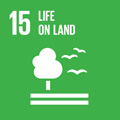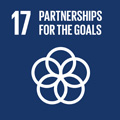- Docente: Isabella Baldini
- Credits: 12
- SSD: L-ANT/08
- Language: Italian
- Teaching Mode: Traditional lectures
- Campus: Bologna
- Corso: Second cycle degree programme (LM) in Archaeology and Cultures of the Ancient World (cod. 8855)
-
from Oct 02, 2024 to Dec 20, 2024
Learning outcomes
At the end of the course, through the examination of specific topics related to Late Antique and Byzantine archaeology in relation to the society and culture of the period, the student thoroughly learns the methodology and content needed to correctly conduct critical research. They are able to use various sources—archaeological, literary, and epigraphic—and an appropriate scientific bibliography.
Course contents
The course will be divided into two modules. In the first module (30 hours), preliminary topics for a general understanding of the Late Antique and Byzantine world will be addressed, developed through worksheets on archaeological contexts and artifacts.
In the second module (30 hours), the process of Christianization of cities between the 4th and 8th centuries will be discussed, using the cases of Constantinople, Thessaloniki, Gortyn, Athens, Aphrodisias, Ephesus) as examples, contextualized within the Mediterranean panorama. Topics on the sustainability of cultural heritage will also be addressed.
Readings/Bibliography
Attending students:
Module 1: The module involves the use of teaching cards that will be provided to the attending students (15 cards related to archaeological contexts). In addition:I. Baldini Lippolis, L'architettura residenziale nelle città tardoantiche, Roma 2005; Bizantini. Luoghi, simboli e comunità di un Impero millenario, Roma 2023, pp. 16-23, 36-47, 60-107.
Modulo 2: R. Krautheimer, Architettura paleocristiana e bizantina, Torino 1986, pp. 74-80; 126-128; 233-265; A. Di Vita, Gortina di Creta. Quindici secoli di vita urbana, Roma 2010, pp. 309-326; Baldini et al., Impressioni bizantine, Salonicco attraverso le immagini fotografiche e i disegni della British School at Athens, Bologna 2014, pp. 15-49; I. Baldini, Atene: la città cristiana, in Gli ateniesi e il loro modello di città, Roma 2015, 309-322; I. Baldini, La città tardoantica del Mediterraneo orientale: pratiche e modelli di organizzazione degli spazi religiosi, in M.C. Parello, S. Rizzo (eds.), Paesaggi urbani tardoantichi. Casi a confronto, Bari 2016, 23-30; I. Baldini, Lo sviluppo monumentale cristiano di Gortina tra il IV e il IX secolo (draft text provided to the attending students).
Non attending students:
Module 1: R. Krautheimer, Architettura paleocristiana e bizantina, Torino 1986, pp. 7-26, 33-68; 233-286; M. David, Archeologia della Tarda antichità, Milano 2021, pp. 61-68, 70-72, 95-103, 109-114, 147-150, 153-156, 167-172, 180, 199-203, 204-211, 222-228, 228-230, 250-253; I. Baldini, La città tardoantica del Mediterraneo orientale: pratiche e modelli di organizzazione degli spazi religiosi, in M.C. Parello, S. Rizzo (eds.), Paesaggi urbani tardoantichi. Casi a confronto, Bari 2016, 23-30; I. Baldini Lippolis, L'architettura residenziale nelle città tardoantiche, Roma 2005; Bizantini. Luoghi, simboli e comunità di un Impero millenario, Roma 2023, pp. 16-23, 36-47, 60-107.
Module 2: R. Krautheimer, Architettura paleocristiana e bizantina, Torino 1986, pp. 74-80; 126-128; 233-265; G. Dagron, Costantinopoli, la Roma d'Oriente, in Aurea Roma, Roma 2000, pp. 230-233; I. Baldini, Statuaria pagana e cristianesimo a Gortina tra IV e VIII secolo in Ideologia e cultura artistica tra Adriatico e Mediterraneo orientale (IV-IX secolo), Bologna 2009, 71-86; A. Di Vita, Gortina di Creta. Quindici secoli di vita urbana, Roma 2010, pp. 309-326; I. Baldini, La virtù dei governatori: monumenti onorari tardoantichi a Gortina e Afrodisia, in S. De Maria, V. Fortunati (eds.), Monumento e memoria dall’antichità al contemporaneo, Bologna 2010, 219-232; I. Baldini et al., Impressioni bizantine, Salonicco attraverso le immagini fotografiche e i disegni della British School at Athens, Bologna 2014, pp. 15-49; I. Baldini, Atene: la città cristiana, in Gli ateniesi e il loro modello di città, Roma 2015, 309-322; I. Baldini, La città tardoantica del Mediterraneo orientale: pratiche e modelli di organizzazione degli spazi religiosi, in M.C. Parello, S. Rizzo (eds.), Paesaggi urbani tardoantichi. Casi a confronto, Bari 2016, 23-30.
Teaching methods
Frontal instruction with direct involvement of students through discussions on the presented topics.
Assessment methods
the exam consists of an oral interview, during which the student will be asked to discuss the topics covered in class. The candidate is expected to have a proper understanding of the main issues addressed. The interview will also serve as an opportunity to assess the candidate's ability to navigate the content of the discipline.
The achievement of a comprehensive understanding of the topics covered in class, along with their critical utilization, a good command of expression and specific language, will be evaluated with excellent grades. Memorization of the material, combined with the ability to provide concise and well-analyzed responses in appropriate language, though not always precise, will result in satisfactory evaluations. Deficiencies in knowledge and/or the use of inappropriate language, even within the context of minimal understanding of the exam material, will lead to grades that do not meet the minimum requirements. Deficiencies in knowledge, inappropriate language, and a lack of orientation within the provided bibliographic materials during the course will be evaluated negatively.
It may be helpful to attend one of the public exam sessions before taking the exam.
Students who attend at least 75% of the lessons are considered to be attending
Teaching tools
ppt downloadable, worksheets
Students who require specific services and adaptations to teaching activities due to a disability or specific learning disorders (SLD), must first contact the appropriate office: https://site.unibo.it/studenti-con-disabilita-e-dsa/en/for-students.
Links to further information
https://www.unibo.it/sitoweb/isabella.baldini
Office hours
See the website of Isabella Baldini
SDGs



This teaching activity contributes to the achievement of the Sustainable Development Goals of the UN 2030 Agenda.
